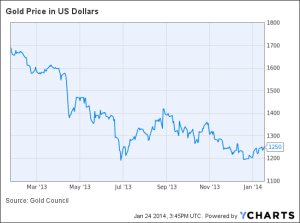SPOT GOLD PRICES AND FUTURES PRICES

In financial lingo, spot gold refers to spot transaction, a spot contract or spot sale or purchase of gold. The spot price of gold is its current price. It is the current price at which the sale or purchase of gold can be made at a given but specific time. Spot prices are computed basing on the most recent individual bid price offered by professional traders worldwide.
Gold prices change every minute because of factors such as ask price, bid price and fixing price. Other factors that affect the spot price include war, forces of demand and supply, the central bank and the metal’s weight.
Gold’s fixing price is not the same as the spot price of gold. Fixing prices are a preserve for banks to decide on and sometimes determined by prominent investors who buy or sell gold in quantities of 400 ounces and above. This means not all investors can buy or sell gold with gold’s fixing price.
The spot price of gold is determined by the price of gold futures’ contracts bought and sold on futures exchanges functioning in several countries. Futures are homogeneous contracts for delivery by a seller or receipt by a buyer some set amount and quality of a product. Futures Exchanges are found in many countries and they make possible commercial trade of all chief merchandise. Examples of these goods include wheat, energy products, corn, soya beans and metals like lead, copper and zinc. Other ranges include agricultural and animal products like cattle, eggs, pigs, coffee or even orange juice. Silver, Gold, palladium and platinum are also traded in form of futures.
Gold Futures
Futures contracts are made every month of the year. For example, a contract for the delivery of wheat in December of the running year (current year) can be bought in May of the previous year. The rationale of a futures contract is to allow a commercial producer and consumer to ascertain guaranteed supply and prices of the commodity to be supplied.
It should also be noted that there is always a switch from the most regularly quoted futures value (price) to the current (today’s) spot price. The difference between the two is what is referred to as the EFP; which stands for Exchange for Physical. If an investor is not interested in the physical delivery of gold, but wants to do some short-term speculation, then he can buy contracts in active gold futures’ trading month s. Taking ownership of such contracts enables the contractor to have power over a set quantity of gold until the delivery month in order to choose whether to take delivery, sell or ‘roll over’ his position.
The gold price that is highly recognized today comes from COMEX which is in New York. COMEX is the world’s leading product exchange company in the United States that controls contracts in precious metals and is a branch NYMEX – New York Mercantile Exchange. The procedure of deciding spot gold prices at COMEX is specified in the New York Mercantile Exchange Rule Book.
Get Today’s Spot Price of gold
The most up to-to-date spot price of gold is that price of the most active futures contract of the month that has been the most active while trading on the exchange contract. The Spot Month is therefore the most active nearest month.